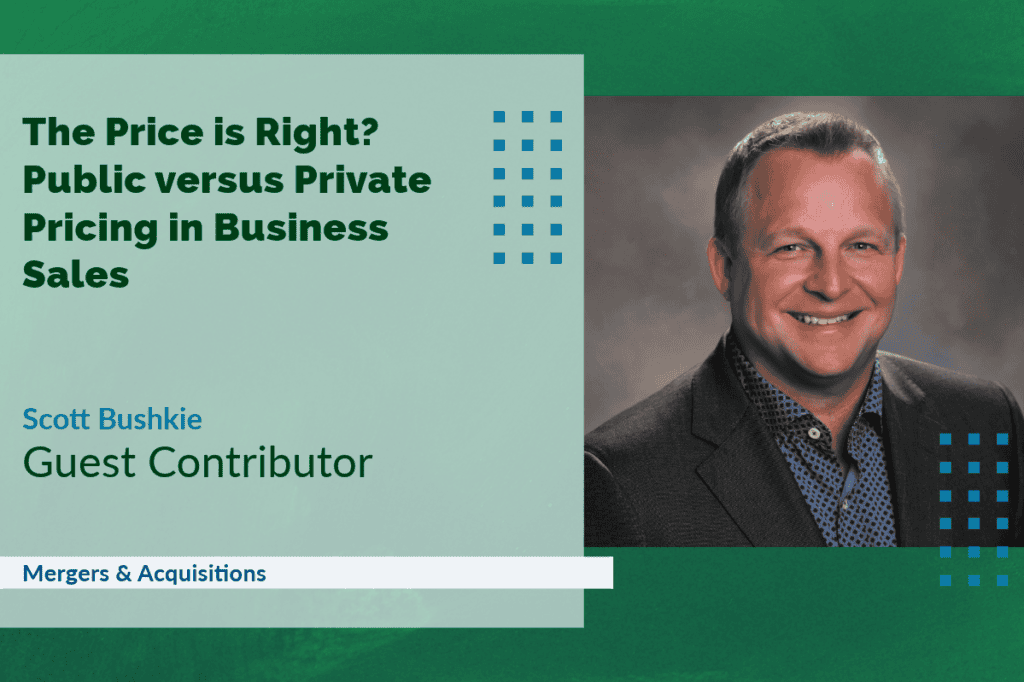
May 19, 2025
When it comes to selling a business, how that business is “priced” can look dramatically different depending on its size and the most likely type of buyer.
For the corner store or local service provider – what we often call Main Street businesses (valued under $2 million) – a public asking price is a common first step.
However, as businesses grow into the lower middle market (valued between $2 million and $50 million), the pricing strategy often shifts to a more confidential approach.
Main Street
When it comes to those smaller, Main Street businesses, you’ll often find a published asking price on sites like BizBuySell.
This transparency can attract buyers and simplify the process.
A listing price is like saying “here’s what we’re thinking,” and it can attract folks who are looking to jump into business ownership.
These buyers might not have experience figuring out business values, so a clear price helps everyone get on the same page.
Lower Middle Market
When it comes to lower middle market businesses, publicly advertising an asking price can be detrimental.
These larger businesses often have more complex operations and greater growth potential – making value more subjective.
By putting a number out there for everyone to see, they risk capping the perceived value of their company and leaving money on the table.
Instead, these companies work with an M&A advisor to establish a confidential benchmark.
These benchmarks are based on an in-depth analysis of the company’s financials, market position, growth prospects, etc.
They serve as a baseline – known only to the seller and their advisor – to help the advisor guide negotiations without publicly restricting value.
The need for realistic targets
Whether setting a public asking price or an internal benchmark, the target must reflect a reasonable fair market value (FMV).
Unrealistic value expectations of the seller are the No. 1 reason a business will not sell.
Setting expectations too high can extend the sale process unnecessarily as serious buyers walk away.
When a business sits on the market too long, potential buyers begin questioning whether underlying issues might exist, creating market fatigue.
Prolonged marketing with an unreasonable price can undermine trust in the seller, waste time and expose the business to unnecessary risk.
The unfortunate reality is that a business that undergoes multiple price adjustments often sells for less than if it had been realistically valued from the beginning.
Current trends
According to the Market Pulse Report – which is sponsored by the International Business Brokers Association and the M&A Source – Main Street sellers averaged 92% of their asking price in Q1 2025.
Meanwhile, lower middle market sellers received 100-plus% of their confidential benchmark.
This pattern aligns with the pricing strategy discussed above.
By setting a public asking price, Main Street businesses generally put a cap on their value and may need to build in a small negotiation buffer so the buyer can feel like they got a “discount” on the deal.
In the lower middle market, achieving 100-plus% of confidential benchmarks validates the effectiveness of working with M&A advisors to set realistic targets.
Sellers know what the market is likely to bear, while maintaining the flexibility to entertain competing offers that may drive value higher.
Maximizing value
So, without a price tag hanging out there, what happens?
Buyers have to dig in and do their homework – their “due diligence.”
They’re trying to figure out how your business would fit with theirs and what advantages you could have together (think “synergies” and “strategic fit”).
Because everyone sees those possibilities a little differently, you often end up with a range of offers.
One buyer might be willing to reach for a prime opportunity, while another might not see significant value, depending on their existing operations and strategic goals.
That’s why having an experienced M&A advisor in your corner is important.
They know how to get the attention of serious buyers – the folks who really “get” what makes your business special.
By bringing multiple buyers to the table at the same time, your advisor helps you find that perfect match who’s willing to pay top dollar because they truly value what you’ve built.
Ultimately, it’s about finding the buyer who sees the gold in your business.
 Sunshine to offset most of Dramm’s Algoma facility’s energy needs
Sunshine to offset most of Dramm’s Algoma facility’s energy needs  Waupaca Foundry nears finish line on its $100-plus million investment
Waupaca Foundry nears finish line on its $100-plus million investment








